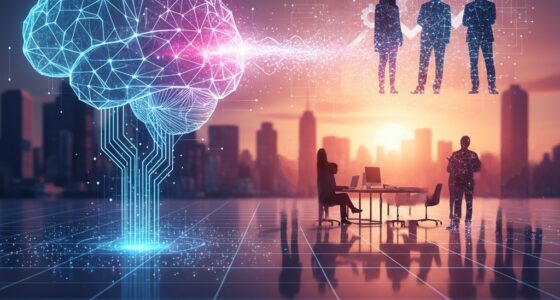What if I told you that within the next ten years, your job might disappear entirely? Not because of layoffs or economic downturns, but because an AI can now do it better, faster, and for a fraction of the cost. Leading institutions like McKinsey and the Brookings Institute project major AI-driven economic shifts by 2030–2040, and we’re already seeing the early signs. Companies like Klarna replaced 700 customer service agents with a single AI system while actually improving customer satisfaction rates.

We’re standing at the edge of something unprecedented in human history: the transition to a post-labor economy. But here’s what most people don’t realize about this shift – it might actually be the best thing that ever happened to humanity. The question isn’t whether this transformation will happen, but which jobs will survive it.
The 80% Problem: Which Jobs Are Actually Safe?
To understand which positions will survive this transformation, let’s examine what researchers call the 80% problem. Studies suggest that only about 20% of jobs today are intrinsically immune to AI automation, meaning eight out of ten current roles face significant disruption or complete replacement.

Picture this: you walk into your office building in 2030. The elevator takes you to the fifth floor, and you step out into what used to be a bustling workspace. But now, most desks sit empty. Not because of mass layoffs or economic collapse, but because AI systems now handle what those workers used to do. The remaining employees aren’t there to crunch numbers or process data. They’re there to manage relationships, solve complex human problems, and make decisions that require genuine understanding of people’s needs.

This scenario isn’t some distant fantasy. It’s already happening in pockets across the economy. But here’s what catches most people off guard: AI isn’t coming for manual laborers first. It’s targeting knowledge workers with laser precision. While we worried about robots taking over factories, AI quietly mastered the art of legal research, financial analysis, and medical diagnosis. AI systems can now scan thousands of legal documents in minutes, outperforming junior lawyers in both speed and accuracy. The radiologist looking for cancer markers? AI algorithms now outperform human doctors in diagnostic accuracy.
We need to think about work in three distinct categories. First, completely automatable jobs involve tasks that follow clear patterns, have measurable outcomes, and don’t require human intuition. Data entry, basic accounting, routine legal research, and most forms of content moderation fall into this bucket. Companies like Duolingo have already cut their contractor workforce significantly after implementing AI translation systems that handle these routine tasks more efficiently than human workers. If your job consists mainly of processing information according to established rules, you’re in the danger zone.

Second, human-AI hybrid roles will survive but transform dramatically. A financial advisor won’t disappear, but they’ll spend less time analyzing portfolios and more time understanding their clients’ life goals and fears. Marketing professionals won’t vanish, but they’ll focus on creative strategy while AI handles campaign optimization and data analysis. These roles require human judgment to interpret AI outputs and apply them to complex, nuanced situations.
Third, purely human-centric roles remain largely protected. What makes these jobs safe? They require physical embodiment in unpredictable environments, deep trust relationships built over time, or creative problem-solving that involves understanding human emotions and cultural nuances.

A plumber dealing with a unique pipe configuration in a century-old building. A therapist helping someone work through childhood trauma. A teacher adapting their lesson plan because they notice a student seems upset. An emergency room nurse making split-second decisions based on years of experience reading patient behavior. Executive relationship management, where trust and long-term strategic thinking matter more than technical analysis, represents another protected category.

What does this mean for your career planning? Traditional advice about getting more education or specializing in technical skills misses the point entirely. The psychological impact hits differently than previous economic disruptions because it targets the very people who thought they were safe. College-educated professionals who followed all the conventional wisdom about career advancement now face uncertainty that their parents’ generation never experienced. The promise that more credentials equals more security no longer holds true when AI can master complex skills faster than humans can learn them.
The definition of skilled labor is evolving in real time. Technical expertise alone doesn’t guarantee value anymore. Instead, the ability to work with AI systems, interpret their outputs, and apply human judgment to complex situations becomes the new skill set. A graphic designer who can prompt AI to generate initial concepts and then refine them based on client feedback becomes more valuable than one who insists on creating everything from scratch. A financial analyst who can use AI to crunch numbers quickly and then focus on strategic interpretation and client communication thrives while colleagues who only know traditional methods struggle.
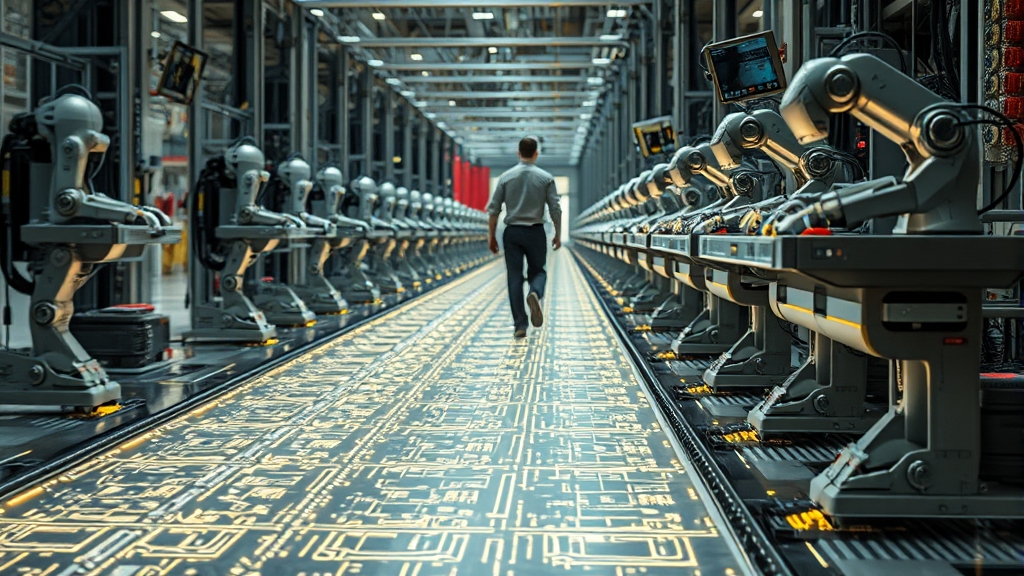
Here’s the uncomfortable truth that most career advisors won’t tell you: job security now depends more on your ability to build human connections than on your technical expertise. The software engineer who can translate complex technical concepts into business language for executives. The doctor who can combine AI diagnostic tools with exceptional bedside manner. The teacher who can use AI to personalize learning while providing the emotional support and motivation that only humans can offer.
This shift rewards different personality types than the industrial economy did. Introverted specialists who preferred working with data and systems find themselves competing with AI that never gets tired, never makes calculation errors, and doesn’t need benefits or vacation time. Meanwhile, people skilled at reading social situations, building trust, and navigating complex human emotions discover their abilities are more valuable than ever.

The companies thriving in this transition understand that human workers need to focus on uniquely human tasks. They’re restructuring teams so that AI handles routine analysis while humans focus on creative problem-solving, relationship management, and strategic thinking. The key insight for individual workers is recognizing which category your current role falls into and making adjustments accordingly.
Most people are still operating under outdated assumptions about which skills matter and which jobs are safe. They’re preparing for a world that no longer exists instead of adapting to the one that’s emerging. By recognizing that human connection, creative problem-solving, and adaptability matter more than technical credentials, you can position yourself for success in the post-labor economy. The future belongs to people who can work with AI rather than compete against it. But what specific human skill becomes most valuable when machines can handle almost everything else?

The Communication Superpower: Why Talking Becomes Your Most Valuable Skill
In a world where AI can write code, analyze financial data, and perform medical diagnoses, the ability to have a genuine conversation with another human being becomes your most valuable asset. We’re witnessing a complete reversal of what skills matter most. For decades, technical expertise ruled the job market. Programming languages, statistical analysis, and specialized knowledge determined your earning potential. But when AI systems can master these technical skills faster than any human ever could, what’s left? The uniquely human ability to connect, persuade, and build trust with other people.

Think about why this matters. AI can crunch numbers perfectly, but it can’t read the room during a tense board meeting. It can generate marketing copy, but it can’t sense when a client is hesitant about a major purchase and needs reassurance rather than more features. It can process customer complaints, but it can’t provide the kind of empathy that turns an angry customer into a loyal advocate. These communication skills transcend technical knowledge because they involve understanding human psychology, cultural context, and emotional nuances that no algorithm can replicate.

Let’s break down the types of communication that remain exclusively human territory. Emotional intelligence involves reading subtle cues, understanding unspoken concerns, and responding appropriately to someone’s emotional state. When a team member seems withdrawn during meetings, a skilled manager notices and addresses the underlying issue before it affects performance. Cultural nuance means understanding how different backgrounds shape communication styles and adapting accordingly. Trust-building happens through consistent behavior over time, shared experiences, and the kind of vulnerability that only humans can authentically express.

Consider how sales professionals are thriving in AI-integrated companies. AI systems now handle 70% of administrative tasks in some enterprises, which means top salespeople can spend 70% more time on high-value client interactions. While AI handles lead qualification, data analysis, and initial outreach, successful salespeople focus on relationship management and complex negotiations. They spend their time understanding client needs, navigating organizational politics, and building the personal connections that close major deals. The result? Higher close rates and larger deal sizes than ever before.

Managers in these organizations discover that their role shifts from information processing to people development. Instead of spending hours analyzing reports, they use AI-generated insights to have more meaningful conversations with team members. They focus on coaching, conflict resolution, and strategic planning – tasks that require human judgment and interpersonal skills. Meeting facilitation becomes particularly valuable because someone needs to guide discussions, manage group dynamics, and ensure productive outcomes from AI-generated insights.

But here’s where cultural differences create unexpected challenges. Consider how American business culture emphasizes direct communication – the first-person imperative that works well with AI systems. When Americans tell an AI system “Generate a quarterly report with revenue breakdowns by region,” the directness produces accurate results. However, in many East Asian cultures, indirect communication is preferred. Someone might say “It would be helpful to understand our regional performance” rather than giving direct commands. This cultural preference for passive communication can confuse AI systems trained on Western directness, creating alignment accuracy problems that require human interpreters who understand both communication styles.

The paradox emerges clearly: to work effectively with non-human intelligence, we need to become more human in our interactions with each other. AI handles the logical, systematic aspects of work, leaving humans to focus on creativity, empathy, and relationship building. This creates opportunities for people who might have felt overlooked in highly technical environments. The introvert who struggled with traditional networking but excels at one-on-one conversations. The person whose emotional intelligence was undervalued in data-driven organizations but now becomes essential for team cohesion.

Presentation skills are becoming premium competencies because someone needs to interpret AI outputs for human audiences. Raw data and algorithmic insights mean nothing without skilled communicators who can translate complex information into actionable strategies. The ability to stand in front of a room, read audience reactions, and adjust your message accordingly becomes incredibly valuable. AI can generate presentation content, but it can’t deliver it with the kind of authenticity and adaptability that moves people to action.

Negotiation abilities take on new importance in AI-integrated workplaces. While AI can analyze market conditions and suggest optimal strategies, human negotiators handle the psychological aspects of deal-making. They recognize when to push harder, when to compromise, and how to frame agreements in ways that make all parties feel valued. The subtle art of finding win-win solutions requires understanding human motivations that go beyond pure logic.
What does this mean for people who prefer working with systems rather than people? The transition can feel uncomfortable, even threatening. Technical introverts who built careers on specialized knowledge might struggle to adapt to communication-focused roles. But here’s the opportunity: AI systems need human interpreters who can understand both technical outputs and human needs. The software engineer who can explain complex algorithms in simple terms. The data scientist who can present findings in ways that inspire action rather than confusion.
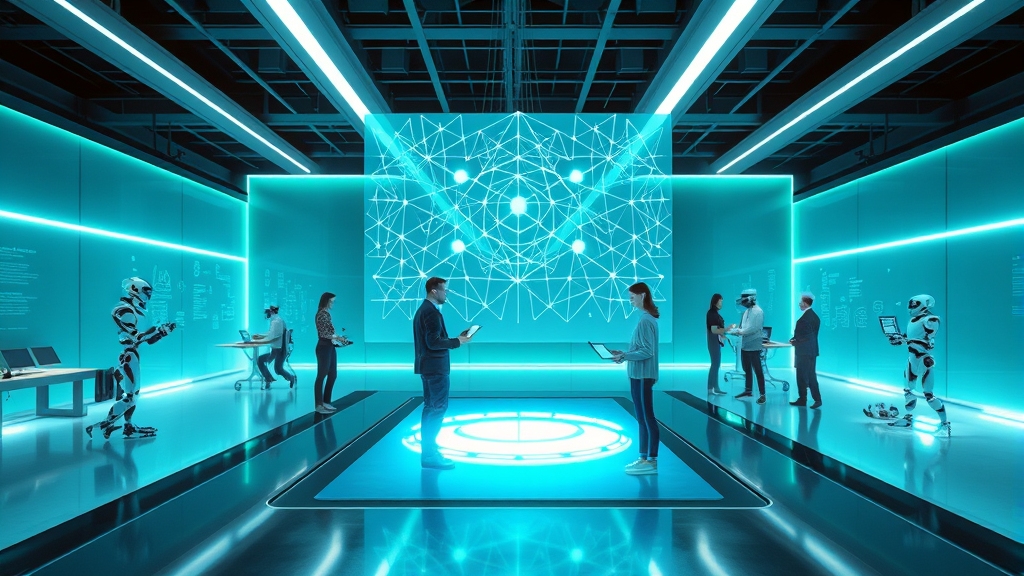
Companies are discovering that emotional intelligence and social skills create irreplaceable value in automated environments. When everything else can be optimized by algorithms, the human touch becomes the differentiator. Customers choose providers based on how they feel during interactions. Employees stay with companies where they feel understood and valued. Partners commit to long-term relationships when trust and mutual respect exist alongside efficient processes.

Your ability to connect with other humans becomes your economic moat in an AI world. While AI systems become commoditized and widely available, your unique combination of communication skills, cultural understanding, and emotional intelligence remains exclusively yours. The person who can build trust with clients, motivate team members, and facilitate productive conversations between humans and AI systems will find themselves increasingly valuable.
What’s one communication skill you can sharpen this week to stay ahead of AI? The answer matters more than you might think, because the timeline for this transformation isn’t what most people expect.
The Timeline Trap: Why 2040 Isn’t When You Think It Is
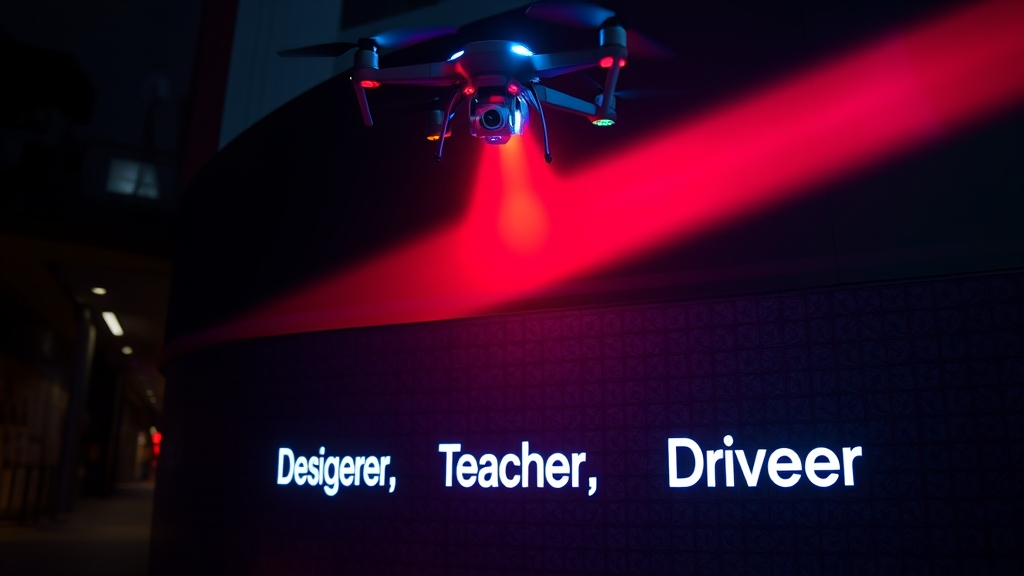
Most people think we have until 2040 to figure this whole AI thing out. That’s what the big institutions keep telling us. The Brookings Institute talks about economic disruption in the 2040s. McKinsey produces charts showing gradual transformation over decades. Government reports suggest we have plenty of time to retrain workers and adapt our systems. But here’s what they’re missing: technological adoption doesn’t work that way anymore. We’re not living in the same timeline as previous industrial revolutions, and the assumptions we’re making about how much time we have could be dangerously wrong.

Let’s look at how technology actually spreads through society. The steam engine took over a century to transform manufacturing and transportation. The printing press needed decades before it fundamentally changed how information moved through society. These historical examples give us a false sense of security about how much time technological transitions require.
But something changed in the late twentieth century. The personal computer went from laboratory curiosity to office standard in about twenty years. The internet reached critical mass even faster. Then smartphones showed us what exponential adoption really looks like. From the first iPhone in 2007 to global smartphone saturation took less than a decade. Suddenly, billions of people were carrying computers more powerful than NASA used to put people on the moon.

Here’s why this matters for AI: each technological revolution happens faster than the one before it. The period from 2000 to 2020 saw new technological paradigms settling in seven to eighteen years. But recently, that timeframe compressed to three to eight years. We’re not just seeing faster adoption; we’re seeing acceleration of the acceleration itself. The infrastructure for rapid change already exists in ways that previous generations couldn’t imagine.
This brings us to the real timeline trap. While everyone focuses on 2040 economic projections, leading AI researchers at frontier labs like OpenAI and Anthropic are talking about superintelligence arriving between 2026 and 2027. These aren’t casual predictions. They’re describing the capabilities they expect from systems currently in development. When the technology capable of replacing human cognitive work arrives years or even decades before economists predict its economic impact, we end up with a dangerous gap between reality and preparation.

The hidden infrastructure makes this timeline even more compressed than most people realize. Every business already runs on cloud computing and software-as-a-service platforms. Your company probably uses Microsoft 365, Google Workspace, or similar systems for daily operations. AI isn’t some completely new technology that needs fresh infrastructure. It’s an additional layer on top of systems that are already everywhere. When AI agents become available, they’ll integrate into the same platforms your company already uses for email, document management, and communication.
Think about what this means for deployment speed. Fortune 500 companies don’t need to build new systems from scratch. They don’t need massive hardware investments or complete workflow overhauls. AI capabilities will appear as new features in software they’re already using. The Microsoft Copilot integration happens through systems already installed on millions of computers. Google’s AI tools work within existing Google Workspace accounts. The transition from human workers to AI assistance could happen as quickly as a software update.

Our brains evolved to handle linear progression, not exponential growth. Most technological adoption follows exponential curves, appearing gradual until it becomes overwhelming. This psychological tendency to underestimate exponential change makes us overestimate our preparation time. We see AI improving gradually and assume we have years to adapt. But exponential curves have a characteristic shape: slow growth for a long period, followed by explosive acceleration.
The gap between technological capability and economic implementation keeps shrinking. Previous industrial revolutions required new factories, transportation systems, and physical infrastructure. Those things take time to build and deploy. But AI runs on infrastructure that already exists. The difference between having the technology and using it economically becomes almost nothing when the infrastructure is already in place and the software can be distributed instantly.

Consider how quickly businesses adapted to remote work during the pandemic. Companies that thought remote operations would take years to implement made the transition in weeks. Why? Because the infrastructure already existed. High-speed internet, cloud computing, video conferencing platforms – everything needed was already deployed. AI deployment will follow a similar pattern, but probably faster because businesses won’t be reacting to an external crisis. They’ll be competing for advantage.
The technology leaders building these systems understand something that economic forecasters might be missing. Government adaptation always lags behind technological change, sometimes by decades. Regulatory frameworks develop slowly while technology moves quickly. But businesses don’t wait for government guidance when competitive advantages are available. They implement new technologies as soon as they provide value, then deal with regulatory questions later.

What does this compressed timeline mean for you personally? The comfortable assumption that you have until 2040 to figure out your place in the post-labor economy might be completely wrong. The changes we’re discussing could arrive in the next three to five years, not the next fifteen to twenty. The jobs that seem safe today might face AI competition much sooner than anyone expects.

The future arrives slowly, then all at once. Right now, we’re in the slowly phase. AI capabilities improve gradually. Companies run pilot programs. Early adopters experiment with new tools. But exponential curves always reach a tipping point where slow becomes fast without warning. We might wake up one morning to discover that the economic transformation everyone expected in 2040 happened over the previous eighteen months while we weren’t paying attention.
If you think you’ve got 15 more years, how will you react when AI capabilities leap forward in just 18 months? The answer might surprise you, because what’s happening to our economy goes deeper than just job displacement.
The Decoupling Revolution: When Productivity Breaks Free from Human Labor

We’re witnessing something that will reshape civilization: the complete separation of economic productivity from human labor. Ford Motor Company in 1950 employed about 300,000 workers and generated roughly $100 billion in today’s dollars. Google today generates over $250 billion in revenue with roughly 180,000 employees worldwide. But that’s not the shocking part. The shocking part is that Google’s market value exceeds Ford’s by more than ten times, and most of Google’s actual work gets done by algorithms, not people. This represents a fundamental economic shift that economists are still struggling to understand.
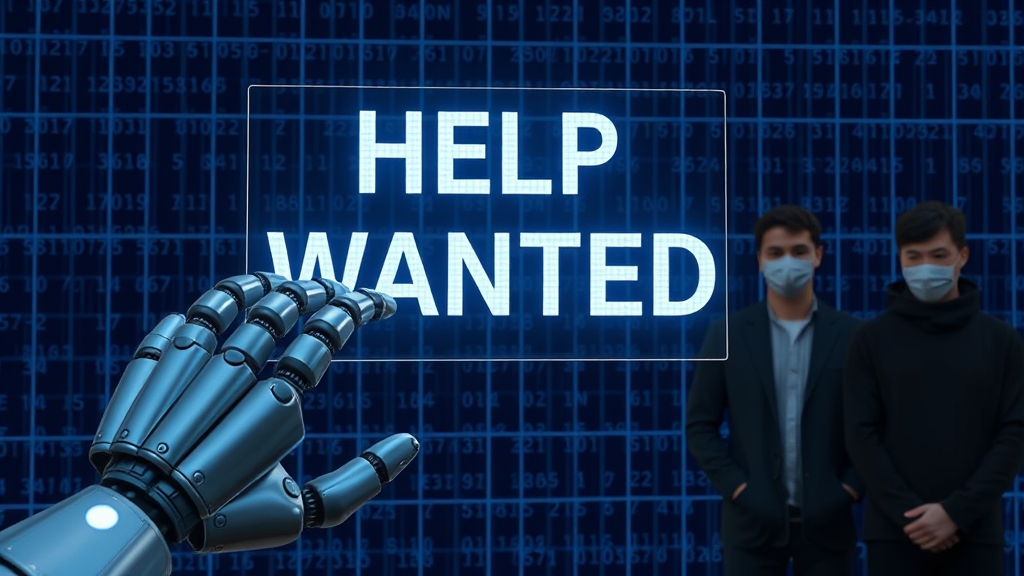
For centuries, economic growth meant hiring more workers. More production required more hands. More services needed more people. But that relationship is breaking down in real time. Companies now achieve massive increases in output without proportional increases in workforce. In fact, many achieve growth while reducing their headcount entirely. Look at how tech titans achieve trillion-dollar valuations with workforce fractions that traditional industries would consider impossible. Apple employs about 165,000 people directly but coordinates with millions of workers in its supply chain to generate over $400 billion in annual revenue. Amazon’s core technology team numbers in the tens of thousands, yet they coordinate logistics for millions of transactions daily.
But unemployment statistics completely miss this transformation. Official numbers count people who are actively looking for work but can’t find it. They don’t capture underemployment, where college graduates work in retail because entry-level professional positions disappeared. They don’t measure delayed career progression, where people take years longer to reach financial independence than previous generations. They don’t reflect the growing number of people who gave up looking for work that matches their skills and education.

Here’s why this matters: new jobs are being created at a slower rate than jobs are being eliminated. Sure, we see new roles like prompt engineers, AI trainers, and cloud architects emerging in just the last five years. But these positions require dramatically fewer headcounts to achieve similar revenue levels. For every new position created, dozens of traditional roles become obsolete. The math doesn’t work out in workers’ favor. One AI system can replace entire departments of data analysts, customer service representatives, or content moderators. Meanwhile, the companies deploying these systems need maybe one or two specialists to manage them.
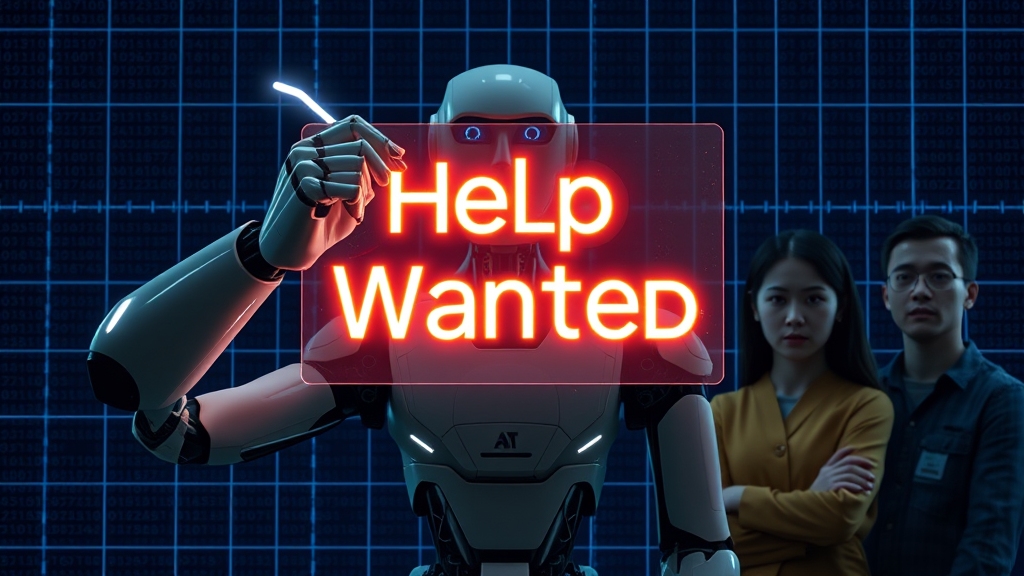
This creates what economists call a productivity paradox, though AI makes it more of a productivity revolution. Human workers become incredibly productive when paired with AI tools. A single developer with AI assistance can build applications that would have required entire teams just five years ago. A marketing professional with AI support can create campaigns that would have needed agencies with dozens of specialists. But here’s the catch: this increased capability reduces the need for human workers rather than increasing it.
The uncomfortable reality is that economic growth no longer equals widespread prosperity. GDP can increase while median wages stagnate or decline. Corporate profits can reach record levels while unemployment benefits get harder to qualify for. Stock markets can hit all-time highs while young adults move back in with their parents because they can’t afford rent. The traditional assumption that a growing economy lifts all boats is proving false in the age of AI-driven productivity.

This decoupling affects different demographics in predictable but troubling ways. Young workers feel the impact first and hardest. Entry-level positions disappear as AI handles tasks traditionally assigned to recent graduates. Career ladders get shorter as middle management roles become unnecessary when AI can coordinate between senior leadership and front-line workers. The result is a generation that faces longer periods of financial instability and fewer opportunities for advancement.
Older workers face different challenges. They often have skills that AI can’t easily replicate, like deep industry knowledge and established client relationships. But they also work in organizations that use AI to eliminate the support staff and junior colleagues who used to handle routine tasks. The senior engineer might keep their job, but the three junior engineers who used to work under them get replaced by AI assistants.

The geographic implications are equally significant. Small cities and rural areas that depend on large employers find themselves particularly vulnerable. When a company can achieve the same output with 30% fewer employees, they often consolidate operations in major metropolitan areas where they can attract the specialized talent needed to manage AI systems. This accelerates population concentration in a handful of major cities while leaving other areas economically stranded.
What makes this different from previous technological revolutions is the speed and scope of change. The industrial revolution took decades to transform agriculture and manufacturing. Workers had time to adapt, move to cities, and learn new skills. But AI transformation happens at software speed. Companies can deploy new capabilities in months rather than years. Workers don’t have generations to adapt. They have years, maybe less.
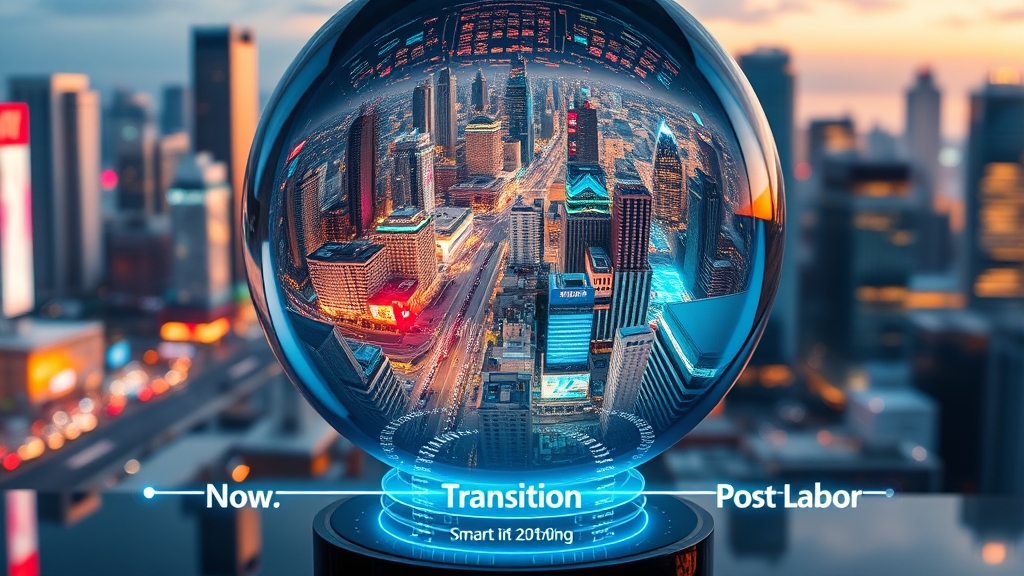
The wealth concentration becomes self-reinforcing. Companies that successfully implement AI systems achieve massive competitive advantages. They can offer lower prices while maintaining higher profit margins. This drives competitors out of business or forces them to adopt similar AI systems, eliminating even more jobs industry-wide. The benefits flow primarily to business owners and shareholders rather than workers.

The most profound change is psychological. For two centuries, people understood that hard work, education, and skill development led to economic security. That basic bargain is breaking down. College graduates discover their degrees don’t guarantee middle-class lifestyles. Skilled workers find their expertise becomes worthless overnight when AI systems master their specialized knowledge. The social contract that connected individual effort to economic rewards is dissolving.
We’re witnessing the end of the labor-based economy model that defined the industrial age. The assumption that human labor is necessary for economic production no longer holds true. Workers can no longer rely on wage labor as the primary mechanism for claiming their share of prosperity. So if work no longer guarantees wealth, how will society allocate prosperity?
The Money Question: Inflation, Deflation, or Something Entirely New?
The answer lies in understanding what happens to money when human labor becomes optional. When AI systems can produce goods and services without requiring human workers, does the entire concept of currency become meaningless? Some futurists argue we’re heading toward a post-money society where abundance makes traditional economics obsolete. But that thinking misses something crucial about how money actually works in human societies.

Money isn’t going anywhere, even in a fully automated economy. It serves a purpose that goes far beyond just paying for labor. Money is fungible, meaning it can be easily exchanged for different goods and services. Even if robots build everything and AI manages every service, we still need a way to decide who gets what. You might want a beachfront house while someone else prefers a mountain cabin. Money remains the most efficient system for making those allocations, regardless of whether humans or machines produce what we’re buying.

This brings us to three possible monetary futures. Hyperinflation from abundance could occur when AI makes production costs approach zero, leading governments to print unlimited money to maintain economic activity. Deflation from reduced demand might happen if most people lose their jobs to AI and have no income, causing demand for goods and services to collapse even as production costs fall. The third possibility involves unprecedented monetary stability through algorithmic management, where AI systems manage money supply with precision that human central bankers never achieved.

Over 130 nations are currently piloting central bank digital currencies, and this isn’t coincidence. These governments understand that post-labor economics will require new monetary tools. Digital currencies offer capabilities that physical cash and traditional banking can’t match. They allow for programmable money that automatically distributes payments based on predetermined criteria. They enable real-time monitoring of economic activity. They make it possible to implement complex distribution schemes without requiring massive bureaucratic systems.

But governments aren’t the only players preparing for monetary transformation. Major corporations like Walmart and Amazon are exploring their own stablecoins to bypass traditional credit transaction fees. This move represents more than just cost savings. These companies are positioning themselves to become monetary authorities in their own right. When you can earn Amazon coins through purchases and spend them across Amazon’s ecosystem, traditional dollars become less relevant to your daily economic life. The same pattern could emerge across multiple corporate ecosystems, creating a world where different currencies dominate different aspects of commerce.
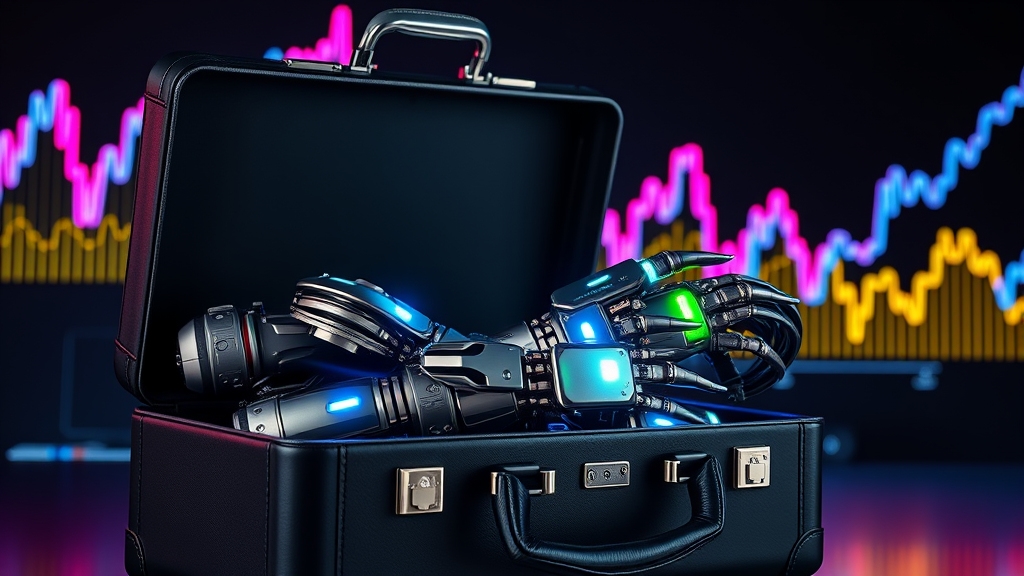
Bitcoin’s role in this transformation remains uncertain, but its potential as a global reserve currency deserves serious consideration. Bitcoin has something that corporate stablecoins and government digital currencies lack: genuine decentralization and global acceptance. While national governments control their digital currencies and corporations control their stablecoins, Bitcoin operates independently of any single authority. In a world where every nation, company, and potentially even individuals launch their own digital tokens, Bitcoin might serve as the neutral standard that enables exchange between different currency systems.

Here’s where things get really complicated: creating distribution mechanisms when wage labor no longer allocates resources effectively. Throughout human history, work determined who got what. You worked, you earned money, you bought things. But what happens when there’s no work for most people to do? This isn’t just about unemployment benefits or welfare programs. It’s about fundamentally reimagining how society decides resource allocation when the traditional mechanism disappears.

This is where programmable money and algorithmic distribution systems become crucial. Imagine currency that automatically distributes income based on citizenship, community contribution, or other criteria that don’t depend on traditional employment. The technical infrastructure for this already exists through blockchain technology and smart contracts. The challenge isn’t technological; it’s political and social. Who decides the distribution algorithms? How do we prevent these systems from concentrating power in the hands of whoever controls the code?
The implications extend beyond individual financial security to fundamental questions about economic democracy. When money can be programmed to follow specific rules and distributed automatically, those who write the rules gain enormous influence over society. This could lead to more equitable distribution if the algorithms are designed thoughtfully and maintained transparently. But it could also create new forms of economic control that make current wealth inequality look trivial by comparison.
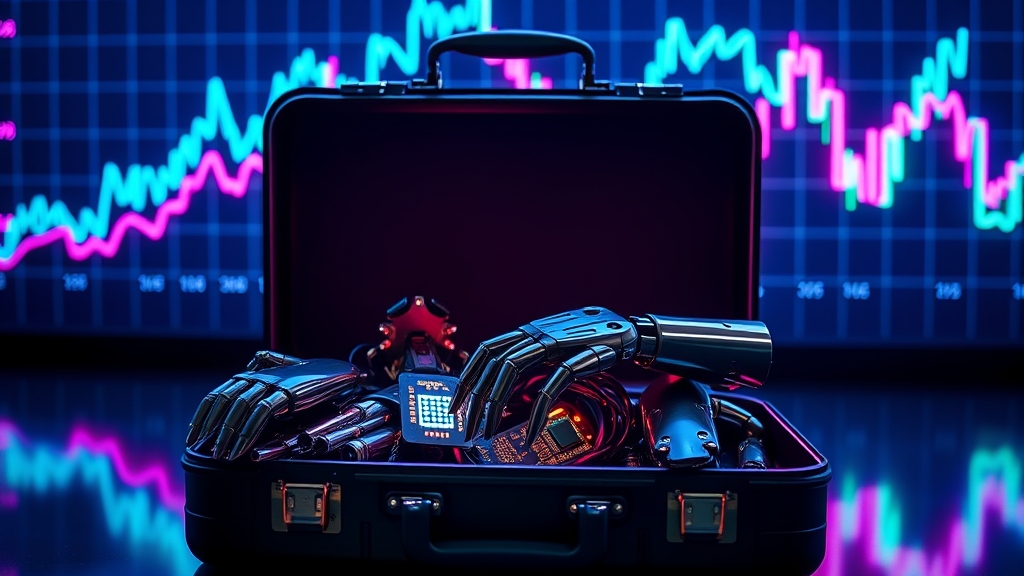
Monetary policy must evolve when the relationship between work and reward changes completely. Central banks currently influence economic activity by adjusting interest rates and money supply, assuming that these changes affect employment and wages. But in a post-labor economy, these traditional tools might become irrelevant. If most people don’t have jobs, interest rate changes don’t affect their spending power. If wages aren’t the primary way money enters the economy, traditional monetary transmission mechanisms break down entirely.

What does this mean for you right now? Start thinking about money differently. The assumption that earning income requires selling your labor time is already becoming outdated in many industries. Consider how your financial security might depend more on your ability to access and influence distribution systems than on your ability to find traditional employment.
The future of money isn’t really about the currency itself, whether that’s dollars, Bitcoin, or Amazon coins. It’s about who controls the distribution mechanisms and how those mechanisms decide who gets what in a world of artificial abundance. The real power won’t belong to those who have the most money, but to those who design and control the systems that create and distribute money in the first place. What if your income isn’t tied to a job but to an algorithm you don’t control? That’s the real question in a post-labor economy, and it reveals something even more fundamental about how power itself is shifting in ways most people haven’t considered.

The Power Paradox: What Happens When Labor Loses Its Leverage?
The shift becomes clear when you examine how labor leverage has evolved over decades. Picture this scenario: it’s 2030, and you’re part of a union organizing committee trying to negotiate better conditions for your members. You call for a strike, expecting management to worry about productivity grinding to a halt. Instead, the CEO responds with three words that chill you to the bone: “Bring in the robots.” What just happened? The fundamental source of worker power throughout human history just evaporated. Your ability to withhold labor, the one thing that gave working people leverage against capital, no longer matters when machines can do the work instead.
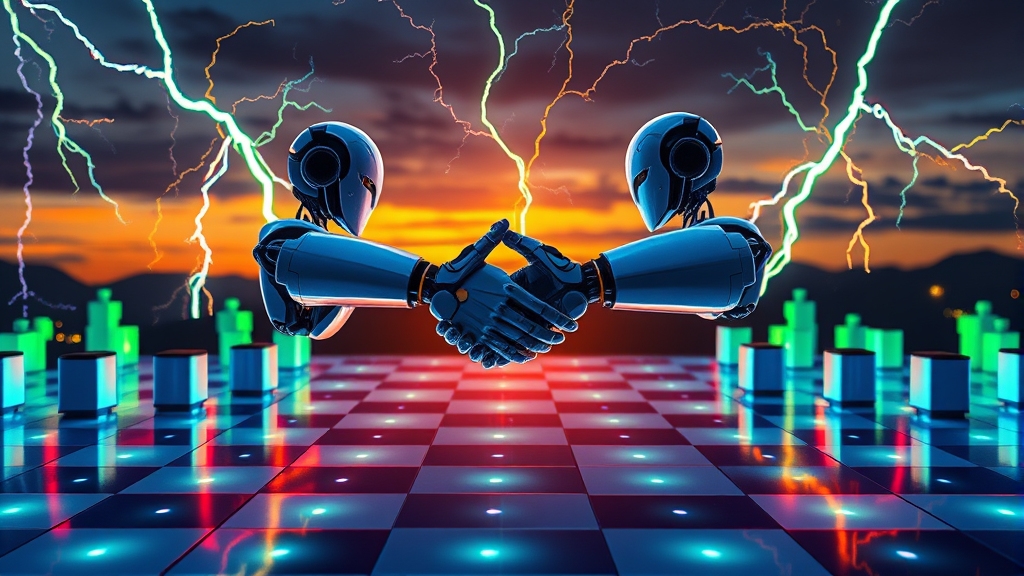
This isn’t sudden. Labor leverage peaked in the 1950s and has been steadily eroding since automation began accelerating in the 1970s and 1980s. Manufacturing jobs moved overseas or disappeared entirely as machines became more capable. Service jobs seemed safe until AI systems proved they could handle customer interactions, data processing, and even creative tasks. Each wave of automation weakened workers’ bargaining position, and AI represents the final phase of this long-term trend.
Power, in economic terms, means the ability to influence outcomes by withholding something valuable that others need. For two centuries, workers had this power because their labor was essential for production. Factory owners needed human hands to operate machinery. Service businesses required human workers to interact with customers. Even knowledge-based industries depended on human brains to process information and make decisions. When workers organized and refused to work, economic activity stopped. This gave them bargaining power to demand better wages, safer working conditions, and more humane treatment.
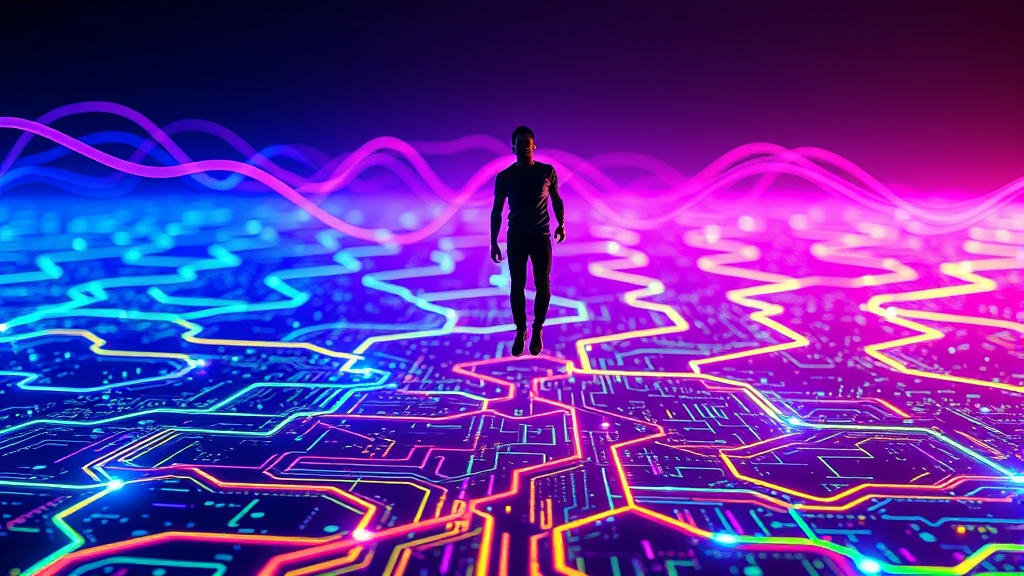
Labor strikes historically gave workers their most effective tool for social change. The eight-hour workday, workplace safety regulations, and the weekend all came from workers organizing and threatening to shut down production until their demands were met. The strike worked because it created economic pain for business owners while demonstrating worker solidarity. But this leverage depended entirely on the irreplaceable nature of human labor. When AI systems can maintain production during a strike, the entire foundation of worker power crumbles.

What happens when your most valuable asset becomes worthless overnight? Workers face exactly this situation as AI capabilities expand. Labor has been a primary source of power precisely because it’s both inalienable and perishable. You can’t separate labor from the person providing it, and labor’s value diminishes if not used immediately. But AI systems don’t have these limitations. They can work continuously without rest, don’t require benefits or job security, and can be deployed instantly wherever needed.

This shift forces us to explore alternative sources of power that don’t depend on labor scarcity. Ownership rights become crucial when traditional worker leverage disappears. If you can’t withhold your labor, maybe you can withhold your consent as an owner or stakeholder. This explains the growing interest in cooperative business models where workers collectively own the companies they work for. When automation increases productivity, worker-owners benefit directly rather than seeing their jobs eliminated for shareholder profit.

Data ownership represents another form of power that citizens can exercise in the digital age. The European Union’s General Data Protection Regulation demonstrates how individuals can claim control over their personal information. The “right to be forgotten” allows citizens to demand that companies delete their personal data, creating real leverage against tech giants who depend on that information for their business models. When you can withdraw your data or refuse to provide it, you gain bargaining power even without traditional employment leverage.

Different forms of property become new sources of citizen power in this transformed landscape. Intellectual property rights allow creators to maintain control over valuable ideas and creative works. Digital property, including data ownership and platform governance rights, creates leverage in an increasingly online world. Physical property, especially land and natural resources, remains valuable because it can’t be digitized or automated away. Communities that understand and organize around these alternative property rights position themselves better for post-labor negotiations.

The uncomfortable truth is that without labor leverage, citizens need new forms of collective bargaining power. Individual workers lose negotiating strength when they can be easily replaced by AI systems. But groups of citizens can still exercise collective influence through consumer choices, investment decisions, and political participation. Boycotts become more powerful when they target companies’ reputations and social licenses rather than just their immediate profits. Shareholder activism allows citizen-investors to influence corporate behavior from the inside.
Historical examples show how societies adapted to maintain democratic participation during previous power transitions. The shift from agricultural to industrial economies eliminated traditional forms of rural political power based on land ownership. But new forms of urban political organization emerged through labor unions, professional associations, and political parties. Similarly, the current transition requires developing new institutions that give citizens voice and influence in an AI-dominated economy.
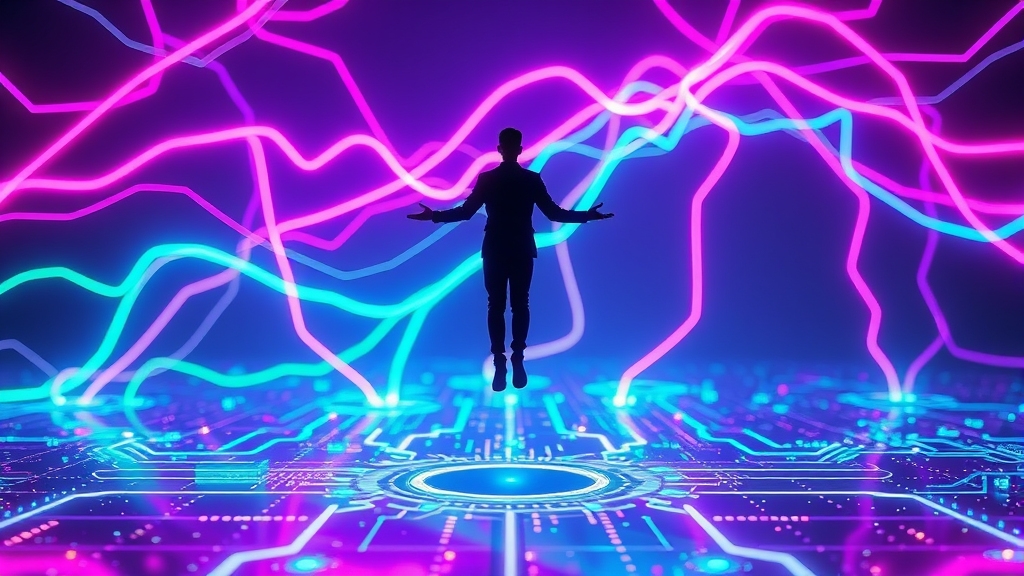
The critical insight is that abundance doesn’t automatically lead to equitable distribution. Throughout history, technological advances that increased productivity didn’t necessarily improve conditions for average people unless they had power to claim their share of the benefits. The steam engine made factory owners wealthy, but workers only benefited when they organized to demand better conditions. Computer technology created enormous value, but most of those gains went to business owners and shareholders rather than the general population.

The age of abundance requires new mechanisms for citizens to claim their share of prosperity. This isn’t about stopping technological progress or returning to pre-AI economic models. It’s about ensuring that the benefits of increased productivity get distributed fairly rather than concentrated among the few who own the AI systems. Whether through new forms of ownership, innovative governance structures, or creative applications of collective power, citizens must develop influence mechanisms that work in a post-labor world.
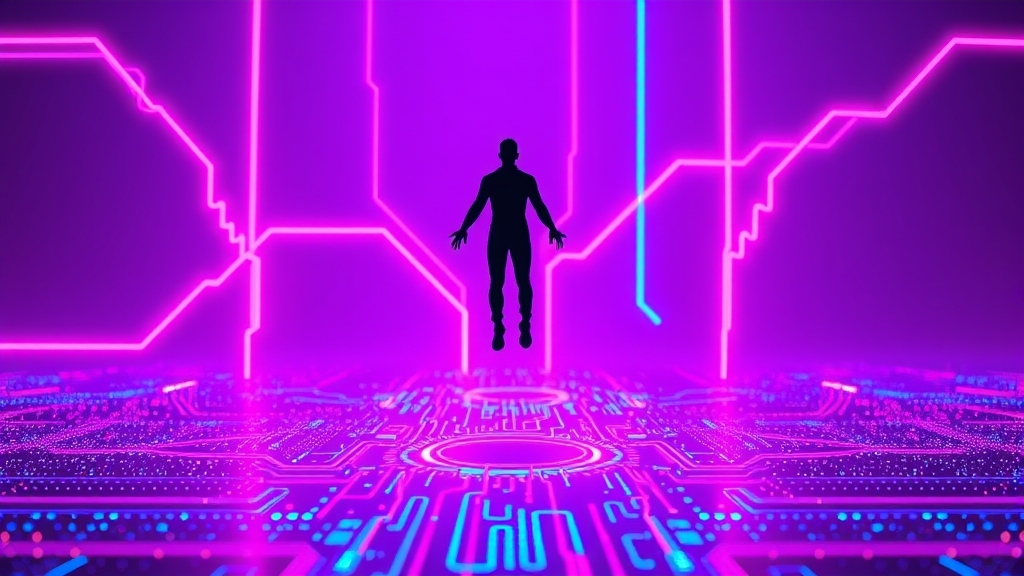
If you can’t withhold your labor, what leverage do you hold in the age of AI? Many people think they’ve found the answer in the creator economy, believing they can monetize their talents and passions online. But the reality of making money as a digital creator might surprise you.
The Creator Economy Reality Check: Why Only the Top 1% Thrive
Here’s a statistic that will shatter your illusions about making it as an online creator: the average OnlyFans creator makes around $180 per month. That’s not a typo. Despite all the stories about creators buying mansions and luxury cars, the vast majority of people trying to monetize their creativity online earn less than minimum wage workers. This reveals the harsh mathematics of attention economics that most people refuse to acknowledge.
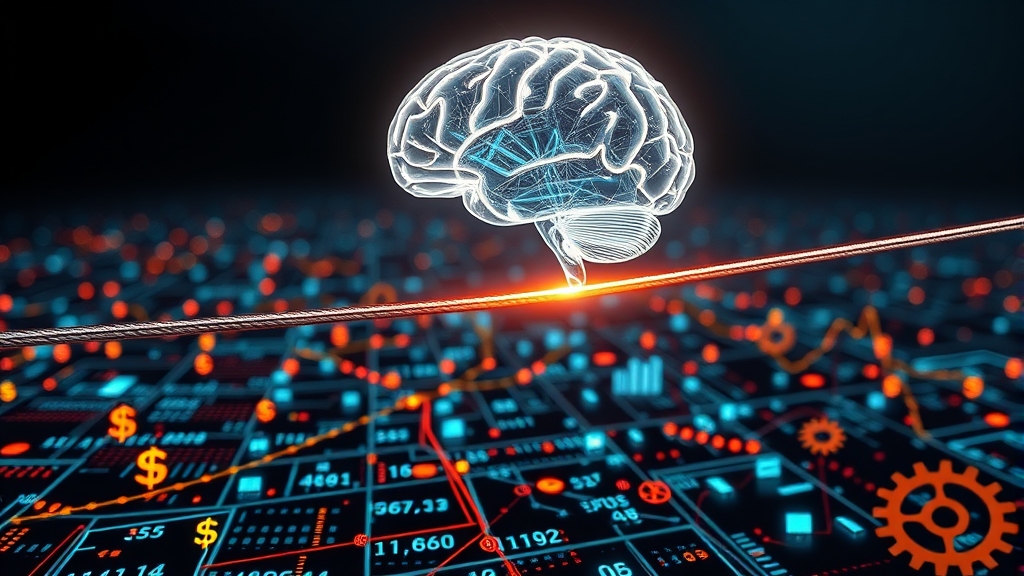
The creator economy follows what economists call a hockey stick curve, where income distribution looks almost flat for 99% of creators, then shoots up dramatically for the top 1%. This pattern emerges because millions of creators compete for only 24 hours of attention per person daily, making top-1% success mathematically inevitable rather than just unlikely. Most YouTubers have fewer than 1,000 subscribers and earn almost nothing from their content. Most Substack writers have subscriber lists in the double digits. Most podcast hosts speak to audiences smaller than a typical high school classroom. Meanwhile, a handful of mega-creators capture millions of followers and generate enormous revenues.
What creates this extreme concentration? Human attention is finite in ways that other economic resources aren’t. Entertainment competes with work, sleep, family time, and basic survival needs for those same 24 hours. Unlike manufacturing, where you can build more factories to increase production, the attention economy can’t expand its fundamental resource. When millions of creators compete for the same limited pool of human attention, most will inevitably lose.

This brings us to the crucial difference between having a platform and having a sustainable business model. Anyone can start a YouTube channel, launch a podcast, or begin writing newsletters. The barriers to entry are essentially zero. But building an audience large enough to generate meaningful income requires understanding marketing, psychology, business strategy, and content creation at professional levels. Having 10,000 Instagram followers sounds impressive until you realize that translates to maybe $100 per month in revenue for most creators. Followers don’t automatically equal income, and this disconnect crushes countless creator dreams.
Here’s the psychological trap that catches most aspiring creators: believing that creative work automatically translates to financial success. Society tells us to follow our passions, and social media shows us highlight reels of successful creators living their dream lives. This creates a dangerous expectation that talent plus effort equals income. But creative markets don’t work like traditional employment. You can be incredibly talented and work incredibly hard while still earning virtually nothing if your content doesn’t reach the right audience or meet market demand at the right time.

AI tools are making this competition even more intense by democratizing content creation while simultaneously flooding markets with new creators. Anyone can now use AI to help write scripts, edit videos, generate artwork, or compose music. This removes technical barriers that previously limited creator competition, but AI-generated content can now optimize for engagement metrics faster than humans can adapt their strategies. The result? Exponentially more content competing for the same finite attention. While AI tools help individual creators become more productive, they also ensure that standing out becomes progressively more difficult as everyone gains access to similar capabilities.

Subscriber growth and audience building remain foundational elements of creator success, but they’re harder to achieve than ever before. Building a loyal audience requires consistent content creation, community engagement, and value delivery over months or years. Most people give up before reaching critical mass. Those who persist discover that audience building is essentially running a small media company, complete with content calendars, engagement strategies, analytics monitoring, and customer service responsibilities. It’s far more demanding than the lifestyle content suggests.
Most creator economy advice completely ignores the statistical reality of market saturation. Courses, books, and mentors sell dreams about turning creativity into careers without addressing the fundamental mathematics of attention scarcity. They focus on tactics like posting schedules, thumbnail optimization, and engagement strategies while avoiding the uncomfortable truth that most creators will never earn enough to replace traditional employment income. This advice industry profits from selling hope to people who have almost no statistical chance of success.

Platform dependencies create additional risks that most creators underestimate. YouTube can demonetize channels without warning. Instagram can shadowban accounts based on algorithmic changes. Patreon can modify payment processing policies. TikTok faces potential bans in various countries. Creators who build their entire business model around platforms they don’t control face constant uncertainty. Yet alternatives like building independent websites and email lists require technical skills and marketing knowledge that most creators lack.
The subscription model that powers many creator businesses faces its own mathematical limits. Consumer subscription fatigue means people become increasingly selective about which creators they support financially. The average person might subscribe to two or three creators they truly love, not dozens. This creates intense competition not just for attention, but for the small percentage of audience members willing to pay for content. Even successful creators often discover that less than 1% of their audience actually pays for subscriptions or products.

Here’s the practical wisdom that most creator economy discussions avoid: treat creative ventures as passion projects that might become profitable and diversify revenue streams just like top creators who blend Patreon, Substack, and sponsorships. This approach protects you from financial disaster while allowing you to explore creative interests authentically. If your creative work eventually generates income, consider it a bonus rather than a plan. This mindset shift removes the desperate pressure to monetize everything immediately and allows you to focus on creating content you genuinely care about.
The creators who succeed long-term often started with this approach, building sustainable income elsewhere while developing their creative skills and audience organically. But even they operate within a system that’s increasingly shaped by forces beyond individual control. The platforms they depend on, the algorithms that determine their reach, and the economic structures that govern their success all exist within a regulatory environment that’s changing rapidly and unpredictably.

The Regulation Riddle: Innovation vs. Safety in the AI Race
Right now, we’re witnessing regulatory chaos that makes the Wild West look organized. The Trump administration proposed banning state-level AI regulations for an entire decade, creating confusion rather than the clarity that businesses desperately need. This proposal faced immediate pushback from states and, surprisingly, from tech companies themselves. Why would the very companies that benefit from less regulation oppose this move? Because they understand something that politicians often miss: innovation actually requires regulatory clarity, not regulatory absence.
Think about what businesses need to make long-term investments in AI development. They need to know what’s allowed, what’s prohibited, and what standards they’ll be held to. Without clear guidelines, companies can’t plan research and development strategies, allocate resources effectively, or make the billion-dollar investments that cutting-edge AI requires. The current approach of “blow open the doors” might sound business-friendly, but it actually creates uncertainty that stifles innovation rather than encouraging it.

Let’s compare how different regions handle this challenge. America traditionally takes a reactive approach to regulation. We wait for problems to emerge, then address them through litigation and after-the-fact rules. Europe takes a more proactive stance, trying to prevent harm before it occurs through comprehensive regulatory frameworks like GDPR, which established data rights that now influence AI development globally. These different approaches have distinct effects on innovation patterns. The U.S. model tends to produce more startups because entrepreneurs can move fast without navigating complex approval processes. But European companies often have clearer long-term guidance about what technologies they can develop sustainably.
What does this mean for actual technological development? Look at aviation, which became the safest form of transport through intelligent regulation, not deregulation. The aviation industry has fewer fatalities per rider mile than trains, boats, or cars. This safety record didn’t happen by accident. It resulted from decades of careful back-and-forth between businesses and regulators, creating standards that pushed technological innovation while protecting public safety. Airlines didn’t achieve this safety record despite regulation. They achieved it because of smart regulation that encouraged better engineering, training, and operational procedures.
The automotive emissions example shows how standards drive innovation rather than stifling it. When governments mandated reductions in harmful diesel emissions, engine manufacturers didn’t just comply with existing technology. They developed entirely new approaches to combustion, fuel injection, and exhaust treatment. These regulations spurred significant advancements in engine technology that made cars cleaner, more efficient, and often more powerful than their predecessors. Legislation guided the deployment and implementation of technology in ways that pure market forces alone wouldn’t have achieved.

But here’s why the current administration’s hands-off approach concerns even tech companies. Major AI developers understand that their long-term success depends on public trust and social acceptance. Without appropriate safeguards, AI deployment could trigger backlash that damages the entire industry. Companies like Microsoft, Google, and OpenAI have invested heavily in AI safety research not because regulations force them to, but because they recognize that unsafe AI systems threaten their business models. They want smart regulation that establishes clear boundaries while allowing continued innovation.
The constitutional questions around federal versus state regulatory authority in AI governance create additional complexity. States argue they have traditional authority over business practices, consumer protection, and professional licensing within their borders. The federal government claims AI regulation requires national coordination to prevent a patchwork of conflicting rules. This tension isn’t just academic. Different regulatory approaches across states could fragment the AI market, making it difficult for companies to develop products that work nationwide. But federal preemption could prevent states from addressing local concerns about AI deployment in education, healthcare, and law enforcement.

These different regulatory approaches have real effects on startup culture and business development. In the U.S., entrepreneurs can launch AI companies quickly, test products with minimal oversight, and iterate based on market feedback. This creates a dynamic startup ecosystem but also increases the risk of harmful products reaching consumers before problems get identified. European startups face more initial regulatory hurdles but gain clearer guidance about long-term compliance requirements. China’s state-directed innovation model offers another alternative, where the government allowed Tesla to enter the Chinese market specifically to stimulate competition, leading to companies like BYD becoming global leaders in battery technology.
What does this mean for American AI development? The U.S. regulatory landscape remains fluid, with potential for significant changes based on political shifts and technological developments. The discussion around banning state-level AI regulations shows how regulatory uncertainty can create confusion rather than promoting innovation. Companies need predictable rules to make long-term investments, but they also need flexibility to adapt to rapidly evolving technology. Finding this balance requires understanding that regulation isn’t the enemy of innovation. Smart regulation actually shapes technology development in positive directions.

The optimal level of AI regulation involves complex tradeoffs with no easy answers. Too little regulation creates risks of harmful deployment, public backlash, and eventual overreaction that could stifle beneficial AI development. Too much regulation could slow innovation, drive development overseas, and prevent Americans from benefiting from AI advances. The most successful regulatory frameworks will likely be those that remain adaptable, flexible, and responsive to evolving challenges and opportunities.
Smart regulation shapes technology development rather than preventing it. The aviation industry’s safety record, automotive emissions improvements, and strategic competition in electric vehicles all demonstrate how appropriate regulatory frameworks can guide technological progress in beneficial directions. The challenge for AI regulation is creating frameworks that encourage beneficial innovation while preventing harmful applications, all while maintaining the flexibility to adapt as technology continues evolving at unprecedented speeds.

If you were a policymaker, would you choose rapid innovation or clear rules? Your answer shapes the future of AI. But while policymakers debate regulatory frameworks, something puzzling is happening in the job market that official statistics aren’t capturing.
The Unemployment Illusion: Why the Numbers Don’t Tell the Real Story
The numbers reveal a troubling disconnect between official economic indicators and actual career realities. Here’s something that doesn’t make sense: we’re seeing massive layoffs across tech companies, recent college graduates struggling to find entry-level positions, and young professionals moving back in with their parents. Yet official unemployment rates remain relatively stable, hovering around historical norms. How can both things be true simultaneously? The answer reveals a fundamental flaw in how we measure economic health. Traditional unemployment metrics miss the real story of what’s happening to work in America.
The standard unemployment rate only counts people who are actively looking for work but can’t find it. This seems straightforward until you realize what it doesn’t measure. It doesn’t capture underemployment, where college graduates work retail jobs because entry-level professional positions disappeared. It doesn’t reflect delayed career progression, where people take years longer to reach financial independence than previous generations. It doesn’t account for the growing number of people who gave up looking for work that matches their education and skills.
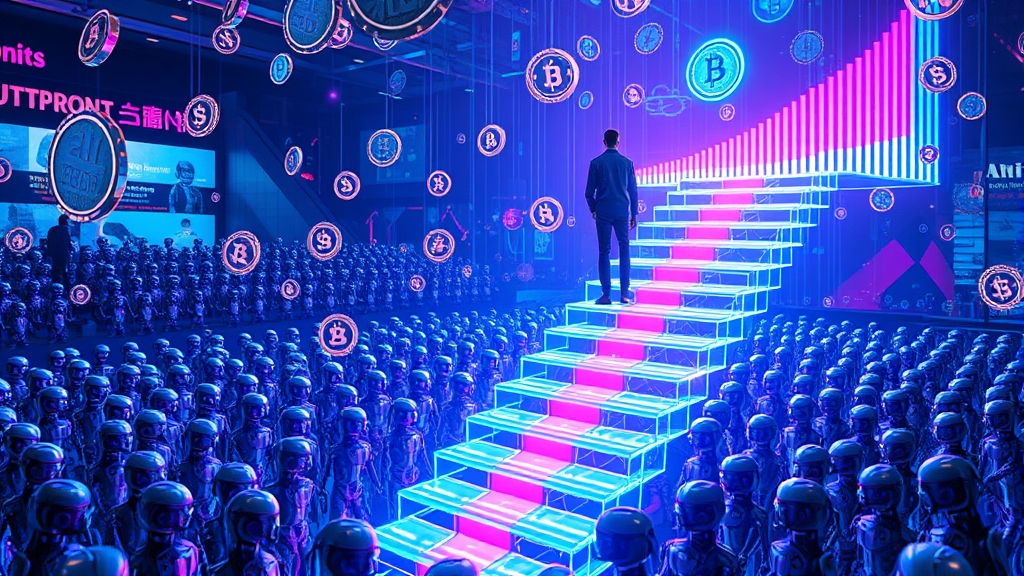
What does this mean for young workers trying to build careers? They face a job market that looks healthy on paper but feels broken in reality. The official statistics suggest everything is fine while lived experience tells a completely different story. This disconnect creates confusion and frustration because the data doesn’t match what people see in their own lives and communities.
The generational wealth divide provides clearer evidence of systematic economic shifts. Boomers bought houses when average home prices were three times annual income, while Gen Z faces housing costs at eight to ten times their income. This isn’t just about individual financial planning. It reflects how AI systems now eliminate the routine tasks that traditionally employed new graduates. Entry-level jobs in the UK dropped by 32% since ChatGPT’s release, providing concrete evidence of how AI deployment directly impacts career entry points.
Historical patterns show that youth unemployment rises first during technological revolutions. When farming mechanized over the past century, young people were displaced from agricultural work before older, more experienced farmers. The same pattern repeats during every major technological shift. Young workers always feel economic disruption before it shows up in aggregate data.

What does this look like in practice? College graduates with engineering degrees work at coffee shops while their student loans accumulate interest. Recent MBA graduates accept unpaid internships because paid entry-level positions in their field simply don’t exist. Law school graduates work as paralegals or in completely unrelated fields because AI handles much of the legal research that used to employ junior attorneys. These people appear employed in official statistics, but they’re not building careers or achieving financial stability at the rate previous generations did.
This creates occupational migration where workers with specialized education compete for generic service jobs because their intended career paths got automated away. Career timelines have extended dramatically, with people taking much longer to reach traditional milestones like homeownership, marriage, and financial independence. This extension doesn’t show up in unemployment data because these individuals have jobs. They’re just not the jobs that lead to middle-class stability.
The anecdotal evidence tells the real story better than official statistics. Retirees with comfortable pensions tour the country in RVs while young professionals struggle with basic financial security. An older generation that could retire from jobs like asphalt work with enough savings to travel contrasts sharply with college-educated young adults who can’t afford rent in major cities. This isn’t about individual choices or work ethic. It reflects systematic changes in how the economy rewards labor that official unemployment numbers completely miss.
Here’s what the statistics don’t capture: roughly 10% to 15% of Americans with college degrees work in jobs that don’t utilize their education. This underemployment represents delayed career progression that affects lifetime earning potential. When someone spends their twenties working retail instead of building professional experience, they don’t just lose those early career years. They lose the compound benefits of professional development, networking, and skill building that previous generations took for granted.
The geographic implications compound these problems. Small cities and rural areas that once offered entry-level opportunities in manufacturing, agriculture, or local businesses now have fewer pathways to middle-class careers. Young adults from these areas face the choice of staying local with limited opportunities or moving to expensive metropolitan areas where entry-level professional jobs are increasingly scarce.

What makes this transition particularly challenging is the speed of change. Previous economic shifts took decades, giving people time to adapt and institutions time to respond. But AI deployment happens at software speed. Companies can eliminate entire categories of entry-level positions in months rather than years. Young workers don’t have generations to adjust. They need to adapt quickly to a job market that’s changing faster than anyone anticipated.
The psychological impact extends beyond individual career concerns to broader questions about social mobility and economic opportunity. When official statistics suggest everything is fine while young adults struggle to achieve basic financial milestones, trust in institutions and economic systems erodes. This creates political and social tensions that official unemployment numbers don’t predict or explain.
Official statistics lag behind lived economic reality during periods of fundamental change. The metrics we use to measure economic health were designed for stable industrial economies where most jobs followed predictable patterns. They work reasonably well during normal times but fail to capture the disruption happening during technological transitions. The unemployment illusion persists because we’re measuring yesterday’s economy while living in tomorrow’s reality.
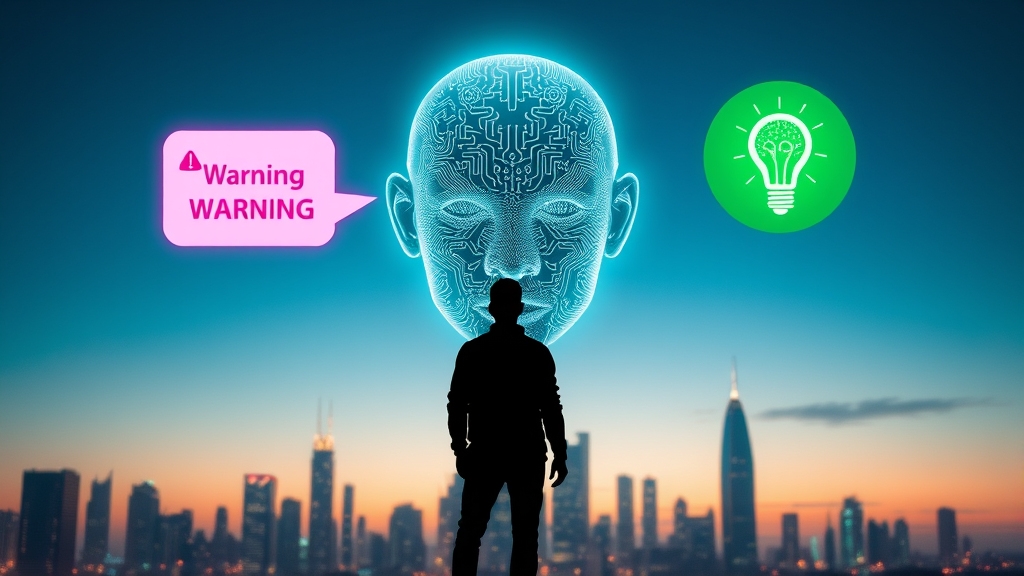
Does the official unemployment rate reflect your career reality? Share your experience. But beyond individual career struggles, there’s something even more unsettling happening that affects how we understand and navigate this changing world.
The Algorithmic Agency Crisis: Who Controls Your Digital Life?
Algorithms now decide what you see, what you think about, and ultimately what you believe. Every morning when you check your phone, invisible systems have already curated your reality. The news stories that appear in your feed, the political content that shapes your opinions, even the products you consider buying – all filtered through algorithmic decisions made by companies whose interests may not align with yours. This represents what we can call the algorithmic agency crisis: the loss of individual control over personal data and content curation that shapes our daily lives.
Algorithmic agency means having meaningful control over the information systems that influence your thoughts and decisions. It encompasses data ownership, the ability to curate your information consumption, and maintaining autonomy over your digital interactions. The European Union’s General Data Protection Regulation provides the best current model for algorithmic rights, granting users control over their data including the right to be forgotten and the right to delete their information. These protections mean European citizens can actually control where their personal data goes and who profits from it.
The first battleground in this digital war involves data ownership. Who actually profits from your digital footprint and personal information? Every search you make, every video you watch, every purchase you consider generates valuable data that companies use to build detailed profiles of your behavior and preferences. But here’s the problem: you don’t own this data about yourself. The platforms do. They collect it, analyze it, and sell access to advertisers and other third parties. Your personal information becomes their revenue stream while you get nothing in return except the “free” service of using their platform.

America is slowly adopting similar protections to GDPR, but the process takes years while tech companies fight every proposed regulation. The United States is gradually moving toward better data protection measures, but we’re playing catch-up with systems that have already collected massive amounts of personal information about American citizens. Meanwhile, platform owners don’t just collect your data passively. They actively manipulate information landscapes through algorithmic tweaking and shadowbanning practices that can suppress certain types of content while promoting others.
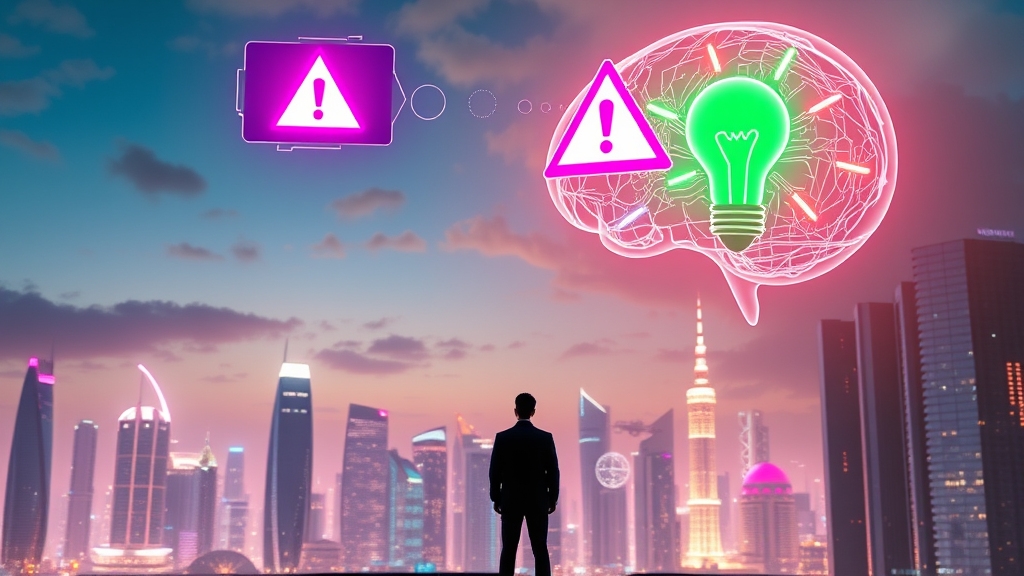
Platform owners can essentially control what information reaches different audiences, and this process often happens invisibly. Users might notice that their posts get less engagement or that certain topics seem to disappear from their feeds, but they can’t see the algorithmic decisions driving these changes. This gives platform owners enormous power to shape public discourse without transparency or accountability. The TikTok controversy exemplifies algorithmic warfare, with concerns that Chinese ownership could influence American users through content promotion and suppression. Elon Musk’s Twitter algorithm manipulation after acquiring the platform demonstrates how domestic platform owners actively shape public discourse through editorial algorithmic decisions.
The monopolistic nature of digital platforms makes the situation worse because “just delete the app” isn’t realistic for most people. Try functioning in modern society without Google, Facebook, Amazon, or other major platforms. Your social connections, work communications, and daily conveniences increasingly depend on these services. Smartphone dependencies force data collection through mandatory platform use for basic activities like restaurant ordering, parking payments, and government services. This digital dependence creates a situation where algorithmic participation becomes essentially mandatory for normal social and economic functioning.
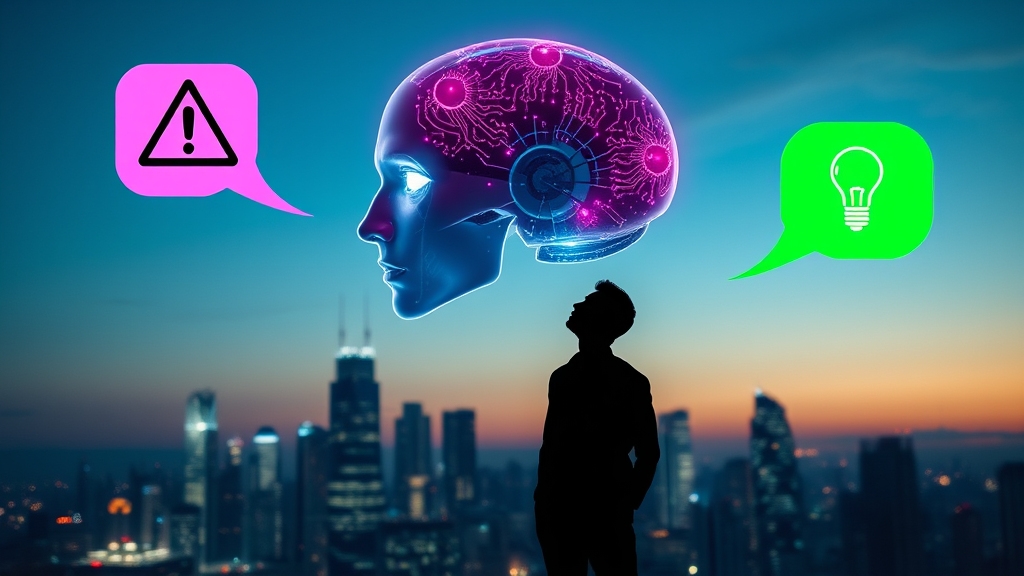
This digital dependence connects directly to democratic participation in ways most people don’t consider. When algorithms control information flow, they influence political opinions and voting behavior. Citizens make democratic decisions based on the information they receive, but that information gets filtered through systems designed to maximize engagement rather than promote informed decision-making. Algorithms favor content that generates strong emotional reactions, which often means promoting divisive or sensational information over balanced, factual reporting.
The connection between algorithmic control and democracy becomes clearer when you consider how narrative control functions as a primary lever of power in the modern world. Throughout history, controlling information flow meant controlling political outcomes. The printing press, radio, television, and internet all reshaped political power by changing how information spread through society. Today’s algorithms represent the latest evolution in this pattern, but with unprecedented sophistication and reach. Russian troll farms demonstrate how foreign actors can inject misinformation and divisive content into American information ecosystems, influencing domestic political conversations and elections.

What makes this situation particularly dangerous is the lack of transparency in algorithmic decision-making. Users can mute and block content on social platforms, but the underlying algorithms still determine what appears in their feeds. Shadowbanning practices can restrict information access without users knowing it’s happening. People think they’re making independent choices about what to read, watch, and believe, but those choices occur within boundaries set by algorithmic systems they can’t see or control.
The ability to control and dominate information flow through digital platforms represents a key method of modern narrative control. Companies that own these platforms essentially control the airwaves of the digital age. They decide which voices get amplified and which get suppressed. This power extends beyond individual user experiences to influence entire social movements, political campaigns, and cultural trends.

We need algorithmic agency rights as a prerequisite for maintaining individual autonomy in an AI-driven world. As AI systems become more sophisticated and pervasive, algorithmic control over information will only increase. Without legal protections and individual rights regarding algorithmic decisions, citizens risk losing fundamental autonomy over their thoughts, beliefs, and democratic participation. The future of human freedom may depend on establishing clear boundaries around algorithmic power and ensuring that individuals retain meaningful control over their digital lives.
If algorithms shape your reality, how much agency do you actually have? This question becomes more urgent as we face the broader implications of technological transformation and what it means for social stability.
Surviving the Great Changeover: Why This Won’t Be Armageddon
Let’s address the elephant in the room: you’re probably worried that this AI transition will lead to social collapse and mass unemployment that tears society apart. These fears aren’t irrational. When you look at rising deaths from despair in America – the opioid crisis, increasing alcoholism, and climbing suicide rates – it’s easy to imagine AI displacement pushing these trends to breaking points. But here’s something important to understand: these problems existed long before AI arrived on the scene. The deaths from despair trend started decades ago, pointing to deeper systemic issues that go beyond technological change.
What does history tell us about major social transitions? Let’s compare our current situation to dramatic upheavals like the American and French Revolutions. Both involved extreme concentrations of power, massive inequality, and ideological conflicts that tore societies apart. But these historical examples actually reveal why our current transition is unlikely to result in full-scale civil war or global conflict as severe as those past events. The key differences lie in how information flows and how modern democratic systems handle pressure.

Information transparency represents one of the most important factors distinguishing current challenges from past revolutionary periods. During previous upheavals, information asymmetry fueled conflicts because people made decisions based on incomplete or false information. Think about how the Russian military miscalculated their invasion of Ukraine because they underestimated Ukrainian resistance due to lack of accurate information. In contrast, modern democracies have widespread information availability that helps people understand what’s actually happening rather than operating on rumors and propaganda alone.
Here’s why modern democracies have built-in pressure release valves that prevent revolutionary explosions. Our federal system provides multiple channels for addressing grievances without resorting to violence. When people feel frustrated with national politics, they can focus on state and local governments. When one political party controls federal institutions, the opposing party can organize at regional levels. Civil society organizations, unions, advocacy groups, and community organizations give people ways to participate in change without picking up weapons.
States can experiment with policies like universal basic income and job retraining programs. If these experiments work, other states can adopt similar approaches. If they fail, the damage remains limited. This system allows society to adapt gradually rather than requiring sudden, dramatic changes that often trigger violent reactions.
Democratic institutions provide mechanisms for peaceful change that didn’t exist during historical revolutionary periods. Elections happen regularly, giving people opportunities to change leadership without civil war. Courts can challenge laws and policies that go too far. Free press can expose corruption and hold leaders accountable. These institutions aren’t perfect, but they create alternatives to revolution that previous societies lacked entirely.

But there’s a real danger we need to acknowledge: institutional capture and corruption that could block necessary adaptations. Elite capture, democratic capture, corruption, gerrymandering, and skewed courts represent significant threats that could prevent society from adapting to economic changes. When institutions get captured by narrow interests, they stop serving the broader public and start protecting existing power structures instead. This makes it harder to pivot and adapt to new economic realities, potentially creating the kind of frustration that leads to social breakdown.
The establishment will resist change until the last possible moment, which creates additional challenges during transitions. Existing power structures benefit from current arrangements and have strong incentives to maintain the status quo even when change becomes necessary. This resistance can delay important adaptations and create unnecessary suffering. But it doesn’t inevitably lead to revolution if democratic institutions remain functional enough to eventually force changes.
Look at how the civil rights movement proves America can navigate major social transitions without collapse. The protests of the 1960s and 70s involved massive social upheaval and fundamental challenges to existing power structures. Legal challenges and organized protests created nonviolent mechanisms for change. The country successfully managed through this difficult period without falling apart, demonstrating that American institutions could adapt to major social changes when pressure became sufficient.

What advantages do we have that previous generations didn’t? Most importantly, we can see the change coming. Previous economic transitions often caught people by surprise. Agricultural mechanization happened over decades without clear warning signs. Industrial automation affected different regions and industries at different times. But AI development happens publicly, with research papers, corporate announcements, and media coverage that gives society advance notice of coming changes.
This visibility creates opportunities for proactive preparation that previous generations never had. Individuals can start developing skills that complement AI rather than compete with it. Communities can plan for economic transitions before they become crises. Governments can experiment with policy responses while there’s still time to adjust approaches. Educational institutions can modify curricula to prepare students for post-labor economics. The advance warning gives society time to adapt if people choose to use it wisely.

The current challenges, while significant, aren’t unprecedented in American history. The country has successfully managed through the Great Depression, two world wars, the civil rights era, and multiple economic recessions without collapsing. Each crisis required adaptations and institutional changes, but the basic democratic framework survived and often emerged stronger. The AI transition represents another major challenge, but not necessarily one that exceeds America’s adaptive capacity.
Here’s why cautious optimism makes sense: the transition will be challenging but manageable with proper preparation and institutional flexibility. The key word is preparation. If individuals, communities, and institutions start adapting now while there’s still time, the transition can happen gradually rather than catastrophically. This requires acknowledging the scale of coming changes while avoiding both denial and panic.
The possibilities for positive outcomes exist alongside the risks of negative ones. AI abundance could create unprecedented prosperity if society figures out fair distribution mechanisms. Reduced need for human labor could free people to pursue creative, educational, and social activities that previous generations never had time for. Environmental challenges could become more manageable when AI systems optimize resource use and develop new technologies.

The transition won’t be automatic or easy, but it’s not inevitable disaster either. Success depends on how well society prepares for change, how effectively institutions adapt to new realities, and how committed people remain to democratic problem-solving rather than giving up on peaceful change. We’ve faced disruptions before and adapted – how can you prepare your community for AI’s next wave? The answer to that question might reshape everything we think we know about work, value, and human purpose itself.
Conclusion
Building your skills for this transition starts with understanding what makes you irreplaceable. Post-labor economics isn’t about job loss. It’s about redefining human value and purpose in an age of artificial abundance. We’re moving toward a world where your worth isn’t measured by how many hours you work, but by how well you connect with other humans, solve creative problems, and adapt to change.

The transition is already happening. Start preparing now by developing communication skills, emotional intelligence, and maintaining control over your data and digital agency. Focus on building relationships, understanding people’s needs, and creating value through uniquely human insights.
If you found these insights valuable, give the article a like—or check out our video content on YouTube and subscribe for more in-depth explorations of AI. We’d love to hear from you: what’s your biggest concern about a post-labor economy? In the age ahead, your worth may be defined by your humanity—are you ready?



